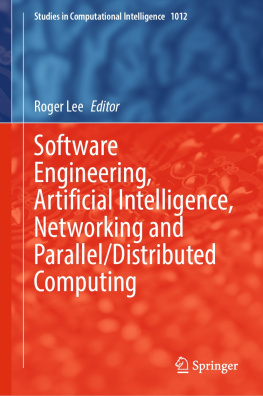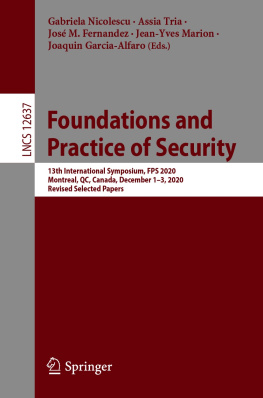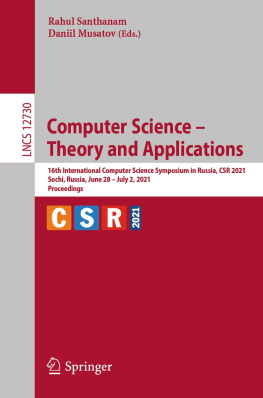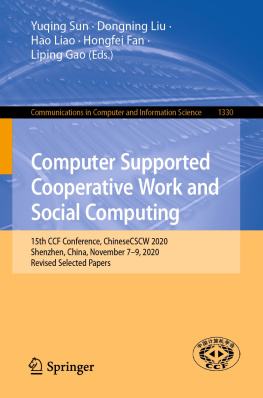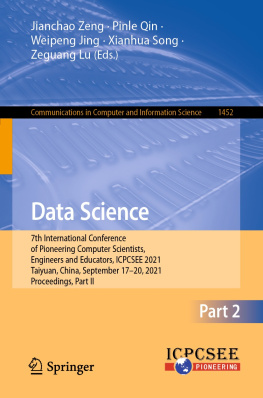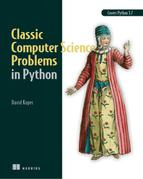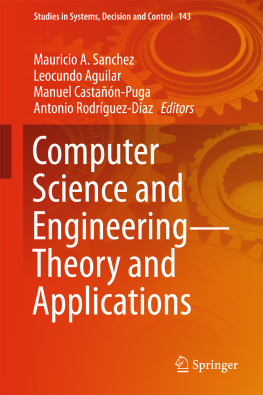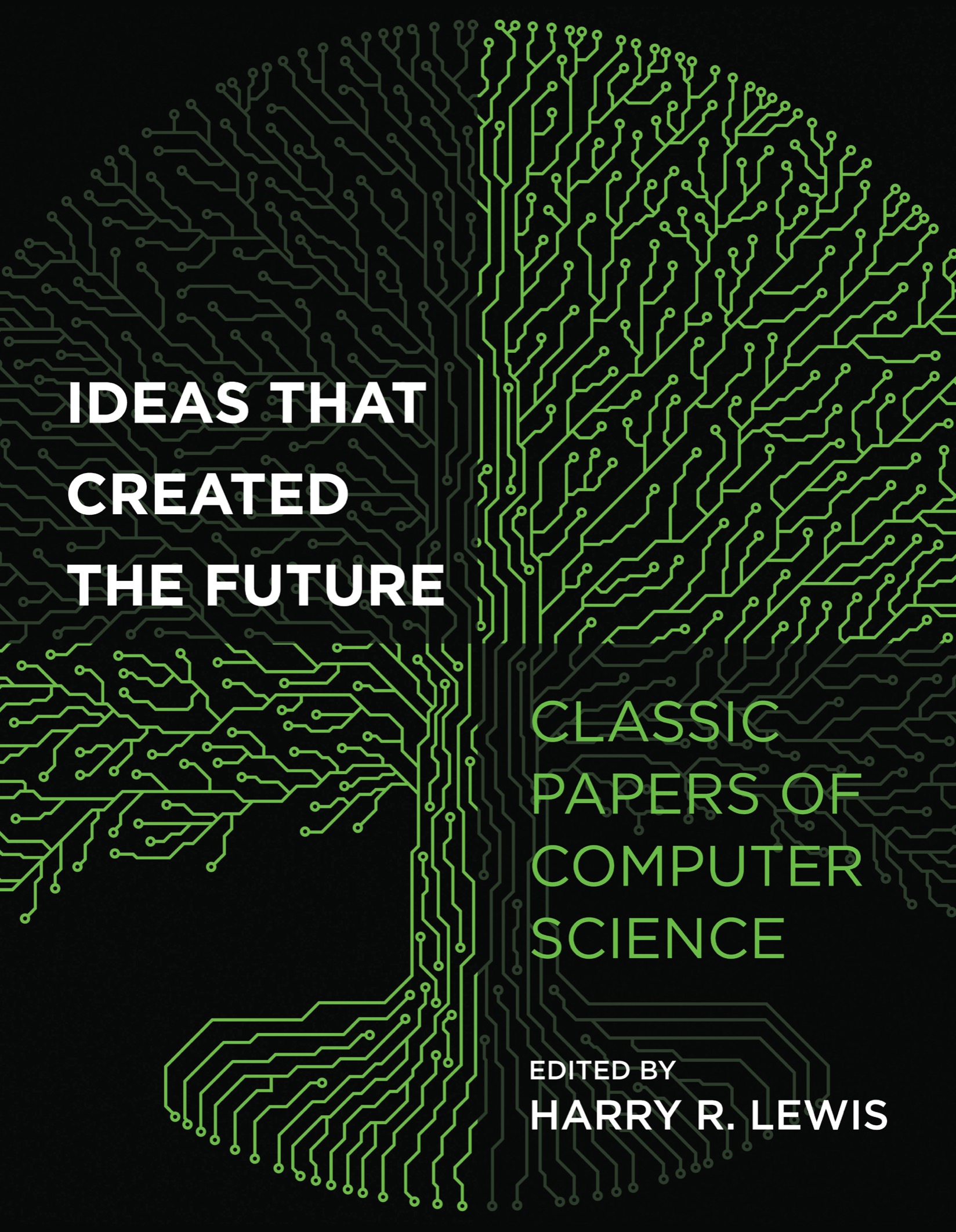edited by Harry R. Lewis
2021 Harry R. Lewis, except as stated at the bottom of the first page of each chapter.
All rights reserved. No part of this book may be reproduced in any form by any electronic or mechanical means (including photocopying, recording, or information storage and retrieval) without permission in writing from the publisher.
Names: Lewis, Harry R., editor.
Title: Ideas that created the future: classic papers of computer science / edited by Harry R. Lewis.
Description: Cambridge, Massachusetts: The MIT Press, [2021] | Includes bibliographical references and index.
Subjects: LCSH: Computer science.
Contents
List of Figures
: Binary to decimal conversion and a binary sum, from Leibnizs De progressione dyadica (1679).
: Expected multiplication speed
: Symbol for hindrance function
: Interpretation of addition
: Interpretation of multiplication
: Analogue between the calculus of propositions and the symbolic relay analysis
: Expansion about one variable
: Circuit to be simplified
: The neuron ci is always marked with the numeral i upon the body of the cell, and the corresponding action is denoted by N with i as subscript, as in the text.
: Title page of First draft typescript
: Clock pulses
: First draft EDVAC orders (instructions)
: Schematic diagram of a general communication system.
: Graphical representation of the constraints on telegraph symbols.
: A graph corresponding to the source in example B.
: A graph corresponding to the source in example C.
: A graph corresponding to the source in example D.
: Decomposition of a choice from three possibilities.
: Entropy in the case of two possibilities with probabilities p and (1 p).
: An operation
: Solution of problem
: The UNIVAC system. [EDITOR: UNITYPER was a typewriter input device, UNISERVO a magnetic tape drive.]
: Solution of a problem.
: Compiling routines and subroutines.
: Compiling Type B and task routines.
: Computing system.
: Operation
: Example [EDITOR: = add to a limit (Ash et al., 1957, page 86).]
: Organization of a perceptron.
: The Two Sides of the H-LAM/T System
: Service vs. number of active users
: Flow chart of the multi-level scheduling algorithm
: Hexagonal pattern.
: TX-2 operating areaSketchpad in use. On the display can be seen part of a bridge . The Author is holding the Light pen. The push buttons used to control specific drawing functions are on the box in front of the Author. Part of the bank of toggle switches can be seen behind the Author. The size and position of the part of the total picture seen on the display is obtained through the four black knobs just above the table.
: Plotter used with Sketchpad. A digital and analog control system makes the plotter draw straight lines and circles either under direct control of the TX-2 or off-line from punched paper tape.
: Line and circle drawing.
: Illustrative example.
: Four positions of linkage. Number shows length of dotted line.
: Half hexagons and semicircles on same lattice.
: Structure 1. Projects subordinate to parts
Structure 2. Parts subordinate to projects
Structure 3. Parts and projects as peers, commitment relationship subordinate to projects
Structure 4. Parts and projects as peers, commitment relationship subordinate to parts
: Structure 5. Parts, projects, and commitment relationship as peers
: A relation of degree 4
: A relation with two identical domains
: Unnormalized set
: Normalized set
: Two joinable relations
)
)
: Implementation steps to deliver a small computer program for internal operations.
: Implementation steps to develop a large computer program for delivery to a customer.
: Hopefully, the iterative interaction between the various phases is confined to successive steps.
: Unfortunately, for the process illustrated, the design iterations are never confined to the successive steps.
: Step 1: Insure that a preliminary program design is complete before analysis begins.
: Step 2: Insure that documentation is current and completeat least six uniquely different documents are requireds.
: Step 3: Attempt to do the job twicethe first result provides an early simulation of the final product.
: Step 4: Plan, control, and monitor computer program testing.
: Step 5: Involve the customerthe involvement should be formal, in-depth, and continuing.
: Summary.
: Complete problems
: Typical packet switching network
: Three networks interconnected by two GATEWAYS
: Internetwork packet format (fields not shown to scale)
: TCP address
: Creation of segments and packets from messages
: Segment format (process header and text)
: Assignment of sequence numbers
: Internetwork header flag field
: Message splitting and packet splitting
: The window concept
: Conceptual TCB format [EDITOR: TCB = transmit control block.]
: Time versus number of workersperfectly partitionable task.
: Time versus number of workersunpartitionable task.
: Time versus number of workerspartitionable task requiring communication.
: Time versus number of workerstask with complex interrelationships.
: A two-segment Ethernet
: Ethernet packet layout
: Collision control algorithm
: EFTP packet layout
: Flow of information in conventional cryptographic system
: Flow of information in public key system
: Secure cryptosystem used as one-way function
: The verifiers original analogy
: Our analogy
Preface
This volume tells the story of computer science in the words that created the field. The collection came into being for two reasons. First, to relieve 21st-century readers of the misimpression that the established conventions of the field were handed down to contemporary culture in finished form. Computer science has a rich family history that should be known to students and practitioners of the field. And second, to help readers see how important new ideas come to be, how tentative, clumsy baby steps become graceful, progressive stridesor sometimes go nowhere for years and then are taken up again after a long delay. The field is still young and dynamic; anyone looking around it today might see some novelty that will be tomorrows canon, hardly recognizable in its infancy.
To tell this story I have selected, with considerable anxiety, 46 papers from the earliest times to 1980, and have introduced each with a brief context-setting essay. Each of these papers made a memorable contribution to the field. Many others might have been selected in addition to or instead of these, and the 1980 cut-off date is arbitrarythough it does represent a moment when the field became so diversified as to defy summation in a small collection like this one.



